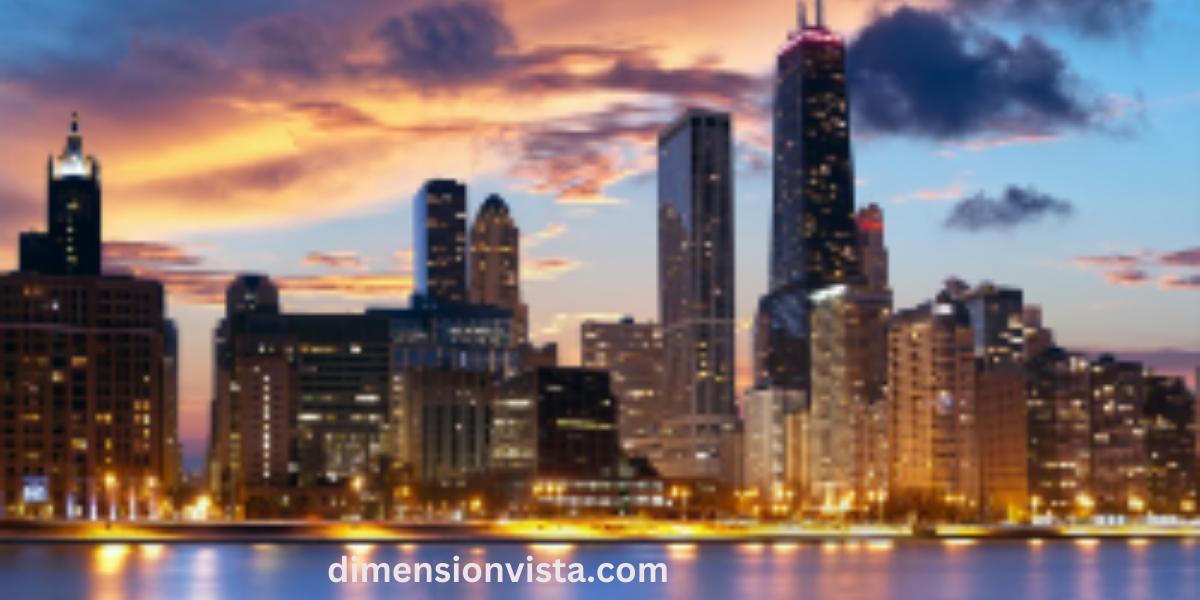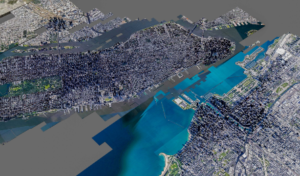Chicago, the Windy City, is renowned for its towering skyscrapers, deep-dish pizza, and rich cultural history. But how big is Chicago? in terms of size, population, and influence? Whether you’re a first-time visitor or a local exploring new corners of this sprawling metropolis, understanding its dimensions is key to appreciating all it has to offer.
In this article, we’ll dive deep into the size of Chicago, exploring not just its physical dimensions but also its geographical spread, population statistics, and cultural impact. By the end, you’ll gain a comprehensive understanding of the city’s size and why it remains one of the most vibrant urban centers in the U.S.
Key Facts About Chicago’s Size and Geography
Before we explore the city in detail, here are some essential facts about Chicago’s size:
- City Area: Chicago spans approximately 234 square miles (606 square kilometers), making it one of the largest cities in the U.S.
- Population: As of the 2020 Census, Chicago has a population of nearly 2.7 million people, making it the third-largest city in the U.S. after New York City and Los Angeles.
- Metropolitan Area: The Chicago metropolitan area, also known as the Chicagoland area, covers about 10,874 square miles (28,470 square kilometers) and houses over 9.5 million people.
- City Limits: The city extends about 26 miles from north to south and roughly 15 miles from east to west.
Now that you have a snapshot of Chicago’s size, let’s take a closer look at the various dimensions that define this iconic city.
1. Chicago’s Geographic Dimensions
The Physical Size of Chicago
Chicago’s geographic size is substantial, stretching across a diverse landscape. The city is bordered by Lake Michigan to the east, offering beautiful waterfront views, beaches, and recreational spaces. The city itself is relatively flat but features a range of natural environments, from parks and forest preserves to rivers, including the Chicago River, which runs through the heart of downtown.
- Lakefront: Chicago boasts over 26 miles of shoreline along Lake Michigan, which includes parks, walking trails, and bike paths. The lakefront area is one of the city’s most famous recreational spots.
- Parks and Green Spaces: Chicago is home to over 570 parks and 8,100 acres of green space. This includes the world-famous Millennium Park, Grant Park, and Lincoln Park.
- Neighborhoods: Chicago is known for its vast network of neighborhoods, each with its own distinct identity. The city has over 70 neighborhoods, from the upscale Gold Coast to the vibrant Pilsen district, which represent different cultures and communities.
City Boundaries: A Comparison to Other Major U.S. Cities
For comparison, Chicago is larger in terms of land area than cities like San Francisco (47 square miles), Miami (56 square miles), and Washington D.C. (68 square miles), but smaller than sprawling cities like Los Angeles (502 square miles) and Houston (669 square miles). In terms of raw size, Chicago falls in the middle but still offers a lot of space for both its dense urban core and its numerous suburban developments.
2. The Population of Chicago
Demographics and Population Density
With nearly 2.7 million residents, Chicago is not only large geographically but also densely populated. The city’s population density stands at about 11,800 people per square mile. However, this number varies significantly by neighborhood. The downtown area and neighborhoods like Lincoln Park, West Loop, and Near North Side see much higher density compared to more residential areas in the South and West sides.
- Diverse Population: Chicago is one of the most ethnically diverse cities in the U.S. The city is home to large communities of African Americans, Latinx, Polish, Irish, Italian, and Asian American residents. This diversity influences Chicago’s cultural fabric, including its food, festivals, and neighborhoods.
- Growth Trends: While Chicago’s population has remained relatively stable in recent years, it has seen a slight decline in overall numbers. However, the metropolitan area continues to grow, as suburban expansion and migration into neighboring counties increase.
- Largest Neighborhoods: The largest neighborhoods by population include Auburn Gresham, Englewood, and the Northwest Side, though these areas have experienced significant demographic changes in recent decades.
Population Trends and Future Projections
The population of Chicago, like many other major cities, has shifted due to factors like housing costs, job opportunities, and suburban migration. While Chicago’s downtown area continues to thrive, some of the city’s outer neighborhoods have seen population declines. Nevertheless, experts project that the city will remain a key economic and cultural hub in the U.S. for decades to come.
3. Chicago’s Metropolitan Area: Chicagoland
The Broader Chicagoland Area
Chicago’s metropolitan area, known as Chicagoland, is much larger than the city proper. It encompasses parts of Illinois, Indiana, and Wisconsin and stretches over 10,000 square miles. Chicagoland is home to more than 9.5 million people, making it one of the largest metro areas in the U.S. The region includes both densely populated urban zones and sprawling suburban areas.
- Suburban Growth: In recent years, many of the fastest-growing areas in the Chicago metro have been suburbs like Naperville, Schaumburg, and Arlington Heights, which provide more affordable housing options compared to the city.
- Economic Powerhouse: The Chicagoland area is not just about population; it’s also a significant economic center, with industries ranging from finance and manufacturing to healthcare and technology.
Transportation and Accessibility
One of the key factors in the success of Chicago’s metro area is its excellent transportation infrastructure. With two major airports (O’Hare International and Midway), multiple interstate highways, and a robust public transit system (Chicago Transit Authority), getting around the region is relatively easy. The city is also a key rail hub, with Amtrak and freight rail lines connecting Chicago to the rest of the country.
4. Chicago’s Urban Design and Layout
The Grid System and City Planning
Chicago is famous for its orderly grid system, which makes navigating the city relatively straightforward. Streets run north-south and east-west, and the system is laid out with numbered streets to guide drivers and pedestrians.
- Loop District: At the heart of the city is the downtown area, known as the Loop. It’s the financial and cultural center of Chicago, home to landmarks like the Willis Tower (formerly the Sears Tower), Millennium Park, and the Art Institute of Chicago.
- Lakefront Trail: The 18.5-mile Lakefront Trail runs parallel to the lake, offering stunning views of both the city skyline and the water. It is a popular area for jogging, biking, and outdoor activities.
Chicago’s Architectural Influence
Chicago’s urban layout is also deeply intertwined with its architectural heritage. The city is renowned for its skyscrapers and innovative buildings, including the first modern skyscraper (the Home Insurance Building), and the iconic John Hancock Center and Willis Tower. Chicago’s architecture is a major attraction for tourists and architects alike.
5. Key Attractions and Landmarks Across Chicago
Chicago is known for more than just its size; it’s a city brimming with history, culture, and landmarks. Some must-see places in the city include:
- The Art Institute of Chicago: One of the oldest and largest art museums in the U.S., housing works from artists like Grant Wood, Georges Seurat, and Pablo Picasso.
- Navy Pier: A popular entertainment destination offering rides, restaurants, and cultural venues.
- The Magnificent Mile: Chicago’s premier shopping district, offering a wide array of high-end retail stores and attractions.
- Willis Tower Skydeck: Offering stunning panoramic views of Chicago from the 103rd floor.
- Millennium Park: Famous for the Cloud Gate (often referred to as “The Bean”), which has become one of Chicago’s signature landmarks.
Conclusion
Chicago’s size extends far beyond just its square mileage. From the vastness of its neighborhoods to the economic and cultural influence of its metropolitan area, the city stands as a true giant in the U.S. Whether you’re marveling at its iconic skyline, exploring its many green spaces, or immersing yourself in its rich cultural heritage, Chicago’s dimensions offer endless opportunities to explore.
With its distinctive neighborhoods, deep history, and thriving economy, Chicago is far more than just a city it’s a place that captures the essence of American urban life. As you plan your visit or deepen your knowledge of the city, remember that Chicago’s true charm lies in the diversity and energy of its people and spaces.


